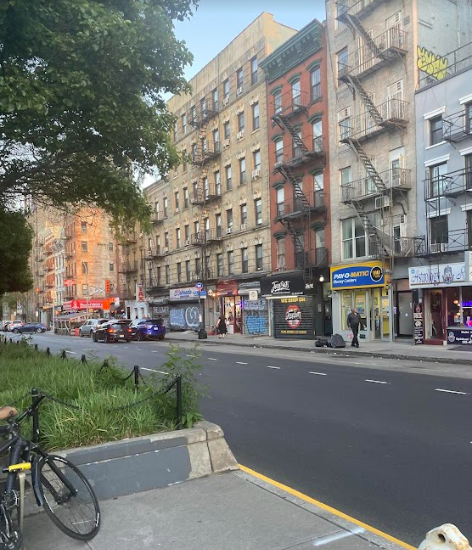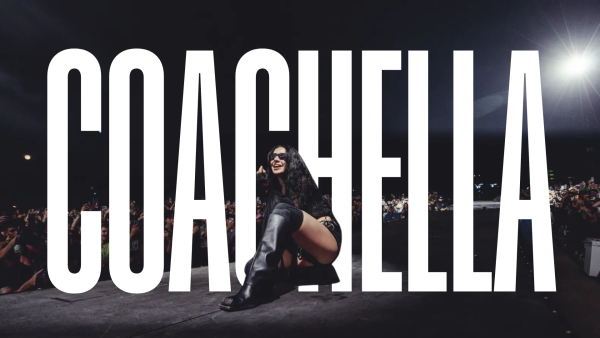Easy to Find Fun in Manhattan’s East Village

The East Village is a neighborhood flourishing with freedom and fun. (Courtesy of Caleb Stine for The Fordham Ram)
Sitting below 14th street and north of Houston Street between Bowery (which extends north as 4th Ave.) and the East River, is the East Village. A neighborhood seeping with artistry and innovation, grungy grit and some of the most popular restaurants in Manhattan, and the world.
Originally settled by the Lenape Native American Tribe before being displaced by the Dutch West India Company, the East Village has undergone major demographic shifts in its 200-year history as a developed neighborhood.
Functioning as a wealthy pocket of lower Manhattan in the early-to-mid 1800s, the East Village was the residence of many upper-class families and political bosses during the “Gangs of New York” era.
Towards the 1860s, when most of the city’s wealthy fled to either side of Central Park uptown, the East Village functioned as a certain overflow for the Lower East Side and the famous surge of migrants that the neighborhood bordering the East Village south of Houston famously experienced late in the 18th century and early in the 19th century.
After the development of office buildings and apartments in the area after the destruction of tenements, the East Village’s entertainment industry began to take shape in the form of a concentrated cluster of Yiddish theaters, thanks to a recent influx of Jewish immigrants to the neighborhood.
The “Yiddish Rialto” developed along the East Side of Manhattan in the early 1900s and 1910s, and prompted Second Avenue’s National Theatre and the Second Avenue Theatre to popularize the theater scene downtown.
Towards the 1960s, during the height of hippie culture and all that jazz, such revolutionaries moved a few miles east of the rapidly-gentrifying West Village, which propelled its eastern counterpart to become the artistic mecca it is today.
In 2023 the East Village’s target demographic is young, liberal, artists and art lovers.
A solid chunk of the Fordham student body has access to a neighborhood right up their alley on a Metro-North connection from Grand Central and then taking the 4, 5 or 6 train to Union Square before walking a few blocks southeast.
What was once a Yiddish theater a century ago stands the Village East Theater on 12th Street and 2nd Ave. Village East plays international and repertory features as well as current blockbusters and is often on a slate of dozens of theaters that consistently host limited- release showings. Appropriately, Village East shows “Fiddler on the Roof” later in the year, as well as “Singin’ in the Rain” and 2007s “Hairspray.”
For visual art outside of film and theater, the Swiss Institute displays modern art in an admission-free space off of St. Marks Place. Their “Ser Serpas: Hall” is featured here until late April, with experimental photography and paintings.
Tompkins Square Park is the East Village’s own Washington Square, only the two are drastically different.
Tompkins Square is a dense urban park that’s always packed and doesn’t let visitors take a break from the iconic East Village rebellious vibe that has defined the neighborhood over the past decades.
In recent years, the restaurant landscape has greatly diversified in the neighborhood.
An Irish pub that’s been in the neighborhood since 1854, McSorley’s Ale House is as classic as they come. Serving two ales, light and dark, and sprinkling the floor with sawdust serves as a time machine as soon as patrons walk in the wooden doors.
The city’s largest Ukrainian ethnic enclave is best eaten sitting outside at Veselka. The spot has been in the neighborhood for 100 years less than McSorley’s and is most famous for their egg cream drink and pierogi. Their beef stroganoff is worth a try as well.
In the last half-century, modern restaurants that were typically reserved for the West Village have popped up east of Bowery.
San Marzano on 7th and 2nd Ave. is a chic cafe building on the inside, serving modern Italian food and old staples. While it won’t compete with Arthur Avenue in terms of tradition or class, it offers a trendy atmosphere and pasta that won’t disappoint.
Rosie’s on 2nd and 2nd is to Mexican food what San Marzano is to Italian. Contemporary dishes mesh with classics on a spacious patio and an inside that sometimes goes convertible-style with open windows in the warm months. The prices are modest for downtown and the fish tacos are absolutely filling and delicious.
Rosie’s is my favorite restaurant atmosphere in Manhattan south of 59th street and a mandatory journey when the temperatures rise above 65 degrees.
There’s a reason the East Village now holds the title for my longest column to date. It has so much.
New York has a way of making people free and confident, and on a summer night in the East Village, the power of the city’s neighborhood is palpable.

Caleb Stine is a senior from Durham, N.C., studying journalism. After transferring his sophomore year to Fordham, he joined the Ram as a copy editor of...










































































































































































































